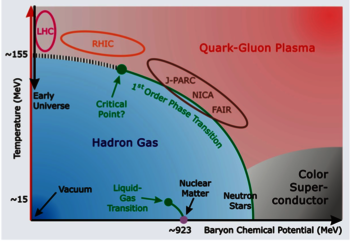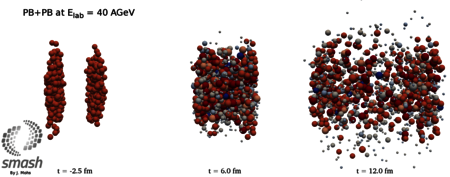Hot and dense QCD
The main goal of heavy-ion research is to probe and understand the properties of strongly-interacting matter, in particular the structures in the phase diagram of QCD matter. By colliding heavy ions at almost the speed of light, temperatures and densities are reached as they existed in the early universe or in collisions of astrophysical objects. Within the GSI-FAIR program, CBM and HADES explore the dense region of the phase diagram.
The underlying field theory of the strong interaction, namely quantum chromodynamics (QCD), cannot be used to directly solve this many-body problem. Therefore, effective approaches become necessary. Transport approaches are microscopic non-equilibrium descriptions of the relevant degrees of freedom (hadrons or partons) and provide information of the full space-time information of all interactions occurring in heavy-ion collisions. These approaches are providing the essential link between QCD properties and the experimental measurements. Pursuing this type of research, it is crucial to solve the same problem with different techniques and focusing on different aspects. Therefore, within the group at GSI there are several complementary approaches being developed.






